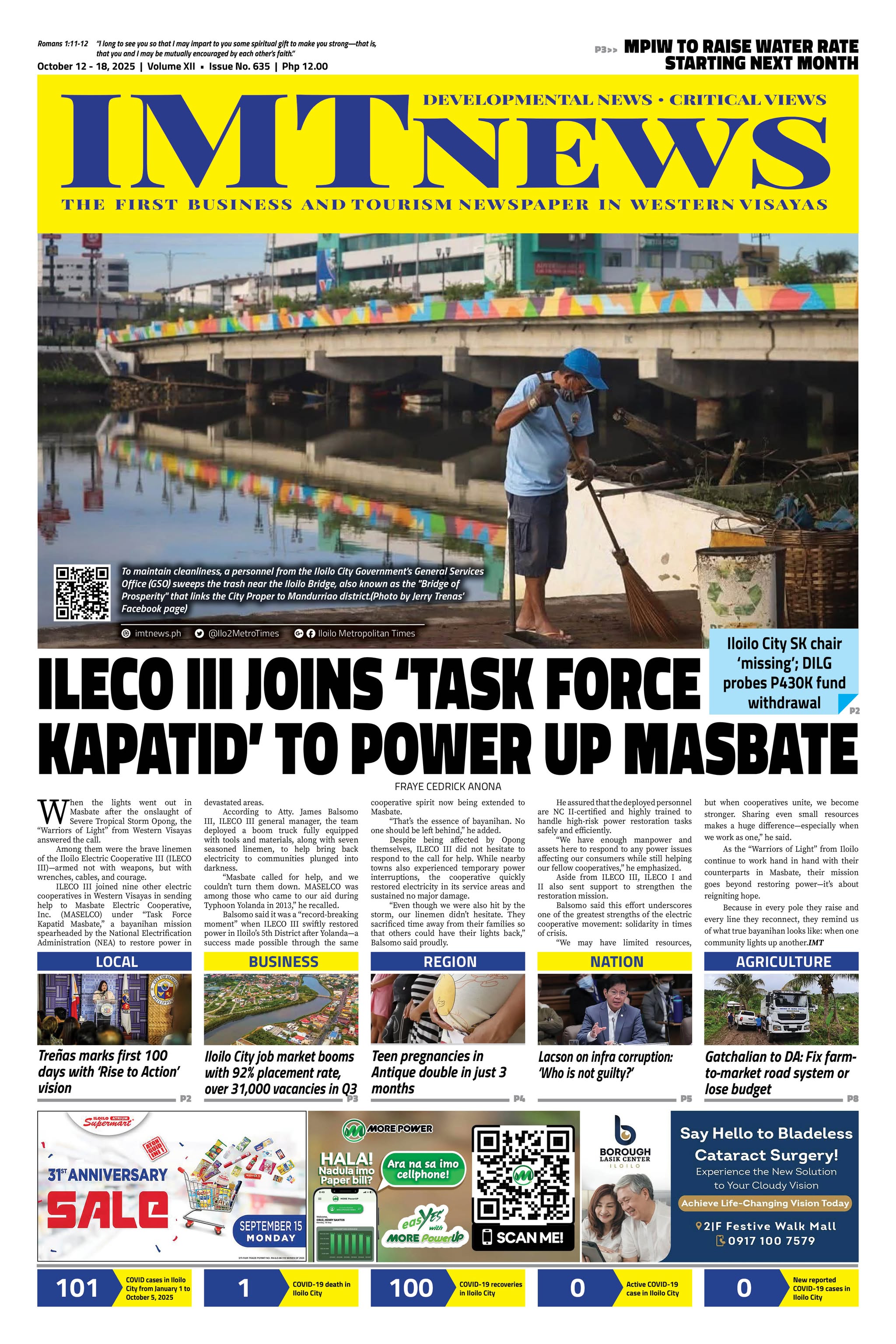HAVE you heard some people say that many Filipinos die without seeing a doctor?
I did not believe that at first, but then I realized later on that it is true.
At first, I thought that the problem is affordability, meaning that people could not afford the cost of seeing a doctor, but I understood later on that it is a problem of availability or accessibility, because there are simply not enough doctors who could see all the patients.
As of 2022, there was roughly one doctor for every 26,000 people in the Philippines. That is only the national average, because in the Bangsamoro Autonomous Region in Muslim Mindanao (BARMM) and Region 11, the ratio is roughly one doctor for every 40,000 people.
It appears, however, that part of the problem is that many doctors are not practicing. Out of about 159, 283 doctors, 95, 039 are practicing, 40.3% are not practicing (about 2 out of 5).
It is estimated that the number of Filipino doctors who are now working abroad is about 10,000.
Not unless we will encourage the hybrid approach of doctor-to-patient consultations via both face-to-face (in person) and via online (telemedicine), we will never have enough doctors who could consult with their patients when needed.
This is something that we could do already, since the internet is now accessible in many places, even in the provinces. I believe that if we do this, many doctors who are not practicing now will decide to practice again, thus increasing the availability of doctors.
Even those doctors who are abroad could still practice remotely via online.
COMMUNITY BASED URBAN FARMING
I live in a village where someone picks up our food waste, supposedly for conversion into organic fertilizer. I am happy to do that, as my contribution to recycling, but how I wish I would have a way to find out what happens to the fertilizers. Either that, or what could be better is if I could also benefit from my contributions.
In this same village, I also see a many vacant lots that have actually become an eyesore, because of tall grass growing, and sometimes because these are often used as dumpsites by some irresponsible villagers.
How I wish that these eyesores could be removed in such a way that the resulting solution could also benefit all villagers.
One possible solution is to convert these vacant lots into urban farms and I mean real farms and not just simple backyard gardens. What I really mean is that these urban farms should benefit the village association because it would be revenue generating, and it would also benefit the villagers by way of having access to vegetables that are safer, cheaper and fresher.
During the covid pandemic, it was a good idea to put up the community kitchens. The downside about that idea however, is that the organizers had to buy their vegetables that were not safe, cheap and fresh.
By safe, I mean being chemical free and being organic. The solution therefore is to grow these vegetables using their own organic fertilizers from food waste.






